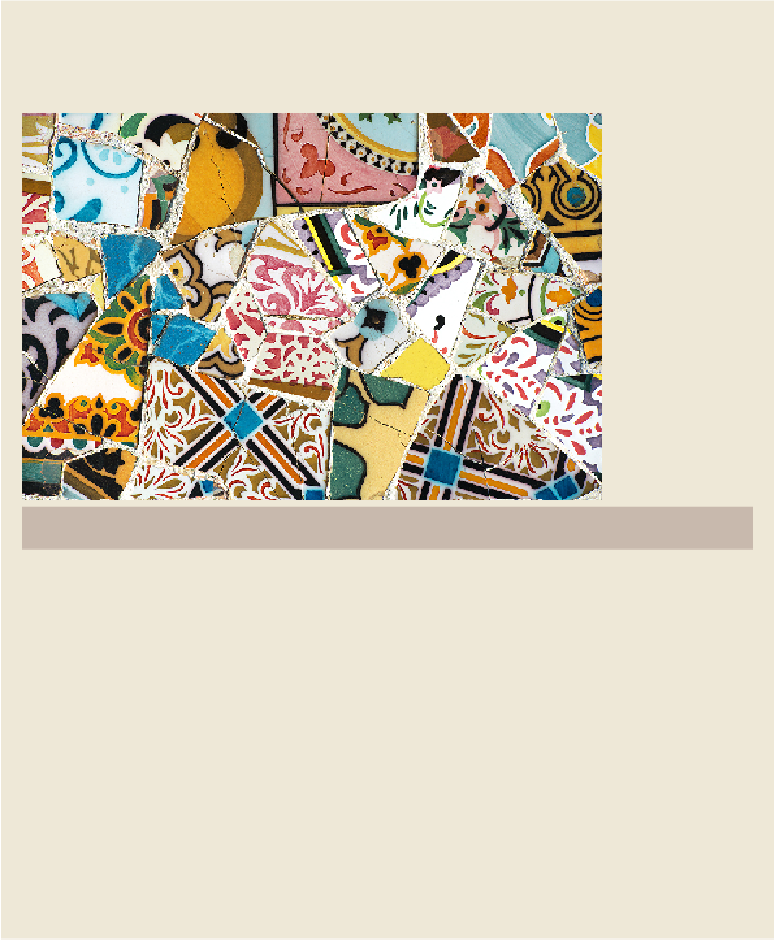Travel Reference
In-Depth Information
Another pivotal work by Puig i Cadafalch was the Casa Martí (better known as Els
Quatre Gats), which was one of Barcelona's first Modernista-style buildings (from
1896), with Gothic window details and whimsical wrought-iron sculpture.
Tile mosaic, Park Güell
Niko Guido / Getty Images ©
Materials & Decorations
Modernista architects relied on the skills of artisans that have now been all but releg-
ated to history. There were no concrete pours (contrary to what is being done at La
Sagrada Família today). Stone, unclad brick, exposed iron and steel frames, and copi-
ous use of stained glass and ceramics in decoration, were all features of the new style -
and indeed it is often in the decor that Modernisme is at its most flamboyant.
The craftsmen required for these tasks were the heirs of the guild masters and had
absorbed centuries of know-how about just what could and could not be done with
these materials. Forged iron and steel were newcomers to the scene, but the approach to
learning how they could be used was not dissimilar to that adopted for more traditional
materials. Gaudí, in particular, relied on these old skills and even ran schools in La
Sagrada Família workshops to keep them alive.

